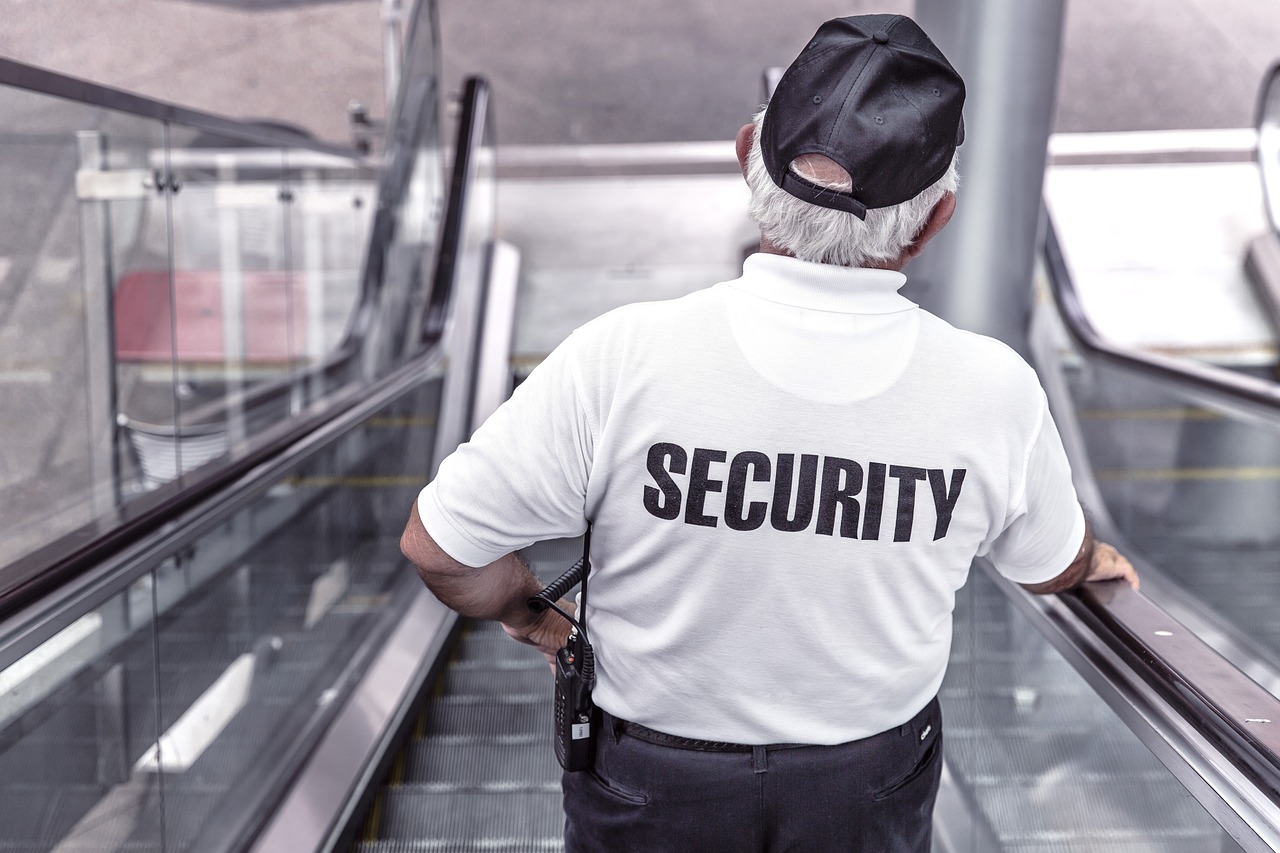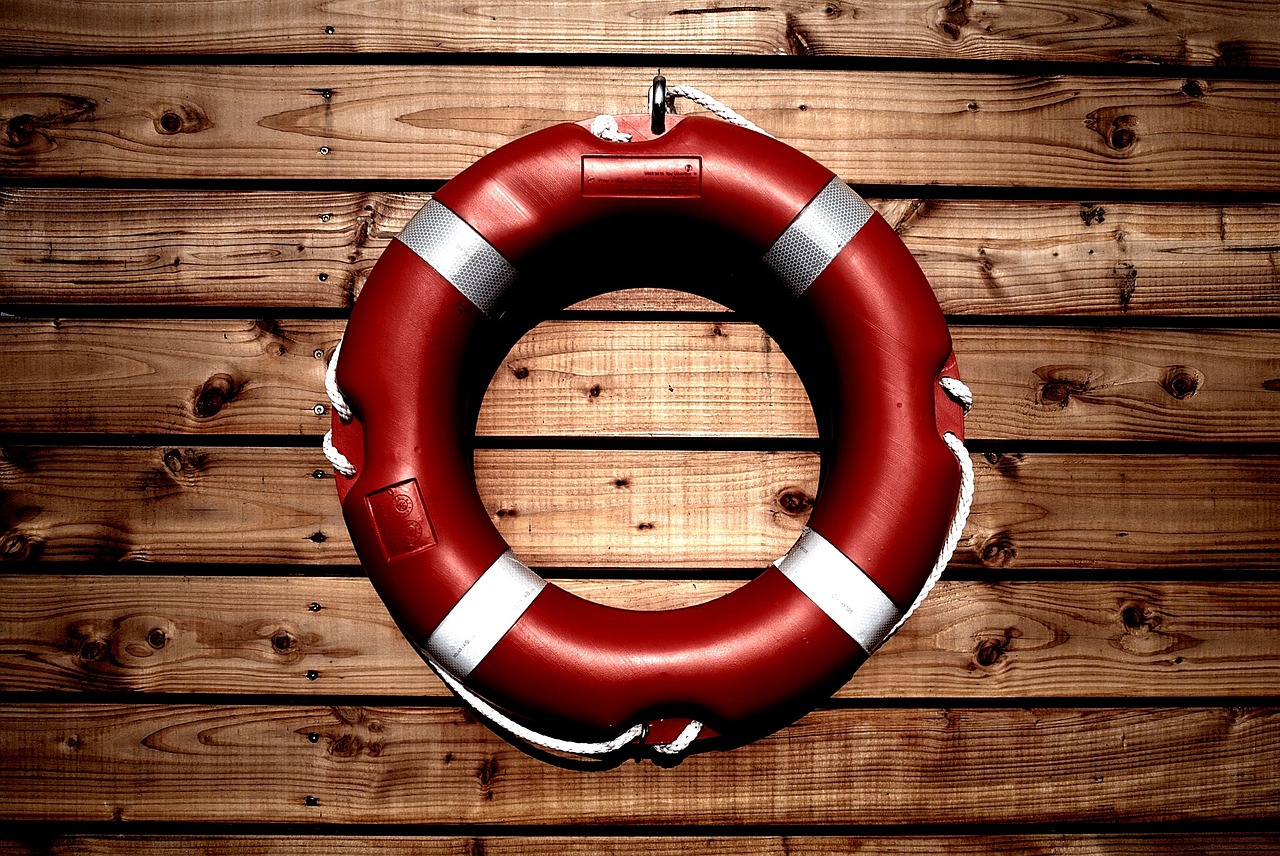Safety Measures and Human Behavior: Breaking Down the Complex Infrastructure
In our fast-paced world, the intersection of safety measures and human behavior is more critical than ever. Think about it: every time you step into a building, drive on a road, or even cross a street, you're engaging with a complex web of safety protocols designed to protect you. But, here's the kicker—these measures are only as effective as the people who follow them. This article dives deep into how our psychological makeup influences our adherence to safety protocols and the design of infrastructure meant to keep us safe.
Understanding safety measures is crucial for preventing accidents and ensuring public well-being. From workplaces to public spaces, safety protocols serve as the backbone of a secure environment. Imagine a construction site without hard hats or a hospital without sterilization procedures; the risks would skyrocket. Safety measures are not just bureaucratic red tape; they are essential frameworks that protect lives and foster a culture of safety. They help us navigate our daily lives with a sense of security, allowing us to focus on what really matters—our work, our families, and our communities.
Human behavior plays a significant role in how we perceive and respond to risks. Have you ever noticed how some people seem oblivious to the dangers around them? This section delves into the psychological aspects of risk perception, examining how our backgrounds, experiences, and even our emotions shape our understanding of safety. For instance, someone who has never experienced a car accident might underestimate the importance of wearing a seatbelt, while another who has been in a severe crash may never get into a car without one. Our personal narratives color our perceptions, leading to varied responses to safety measures.
Cognitive biases can distort our understanding of risks, leading us to make poor decisions when it comes to safety. For example, the Dunning-Kruger Effect illustrates how individuals with low ability often overestimate their skills. This phenomenon can lead to dangerous situations when people underestimate risks and ignore safety protocols. If a novice driver believes they are more skilled than they truly are, they may take risks that could endanger themselves and others.
This effect highlights a critical flaw in human judgment. Those who lack competence often lack the awareness to recognize their shortcomings. Consequently, they may disregard safety measures, believing they are invulnerable. This disconnect can have dire consequences, especially in high-stakes environments like construction sites or healthcare facilities.
Another cognitive bias at play is optimism bias, the tendency to believe that negative events are less likely to happen to oneself. This bias can lead to a false sense of security, causing individuals to ignore safety protocols. For instance, someone might think, "That accident only happens to other people," and choose to skip wearing a helmet while biking. This mindset can be detrimental, as it fosters a culture of complacency around safety practices.
To combat these biases and improve safety compliance, we need behavioral interventions. These strategies can encourage safer behaviors through nudges, training, and awareness campaigns. For example, a simple reminder to wear a seatbelt can significantly increase compliance rates. Similarly, training programs that emphasize the importance of safety can reshape attitudes and behaviors. It's about creating an environment where safety becomes second nature.
The design of infrastructure plays a vital role in promoting safety. Thoughtful design can mitigate risks and enhance user experiences in various environments. For instance, pedestrian-friendly streets with clearly marked crosswalks and traffic signals can significantly reduce accidents. This section examines how user-centered design principles can lead to safer and more effective infrastructure solutions.
User-centered design focuses on the needs and behaviors of individuals. By considering how people interact with their environment, designers can create safer spaces. For example, installing handrails in stairwells or using non-slip materials in wet areas can prevent accidents. These small adjustments can make a world of difference in enhancing safety.
Analyzing real-world examples of safety-centric infrastructure helps identify best practices. Consider the implementation of roundabouts instead of traditional intersections; studies have shown that roundabouts can reduce accidents by up to 40%. Such successful designs not only improve safety outcomes but also enhance the overall user experience.
Despite the clear benefits, implementing safety measures often faces obstacles, including resistance to change and resource limitations. Many organizations struggle to prioritize safety in their operations, often viewing it as an expense rather than an investment. This section explores common challenges and potential solutions for overcoming them in various contexts, emphasizing the need for a cultural shift towards valuing safety as a core principle.
- What are the most common safety measures in workplaces? Common safety measures include personal protective equipment (PPE), safety training, and emergency protocols.
- How can cognitive biases affect safety compliance? Cognitive biases can lead individuals to underestimate risks, resulting in non-compliance with safety protocols.
- What is user-centered design? User-centered design focuses on creating products and environments that prioritize the needs and behaviors of users, enhancing safety and usability.
- How can organizations overcome resistance to safety measures? Organizations can foster a culture of safety through training, open communication, and by demonstrating the benefits of safety measures.

The Importance of Safety Measures
Understanding safety measures is crucial for preventing accidents and ensuring public well-being. Imagine walking into a bustling workplace or a crowded public space without any safety protocols in place. It would feel like stepping into a game of chance, wouldn't it? Safety measures serve as the invisible shield that protects us from unforeseen dangers. They are not just rules; they are essential frameworks that guide our behavior and promote a culture of safety.
In various settings, from construction sites to healthcare facilities, the implementation of safety protocols can mean the difference between life and death. For instance, consider a construction site where heavy machinery is in operation. Here, safety measures such as wearing helmets, using harnesses, and following strict operational guidelines are not just recommendations—they are requirements. These protocols help mitigate risks and create an environment where workers can perform their tasks without constant fear of injury.
Furthermore, in public spaces like parks or shopping malls, safety measures like surveillance systems, emergency exits, and crowd control protocols play a vital role. They ensure that in the event of an emergency, people can evacuate safely and efficiently. The presence of these measures can significantly reduce panic and chaos, ultimately saving lives. Thus, the foundational role of safety protocols cannot be overstated; they are the backbone of any well-functioning society.
To illustrate the importance of safety measures, let’s look at a few key benefits:
- Accident Prevention: Effective safety measures significantly reduce the likelihood of accidents occurring.
- Enhanced Public Trust: When people see that safety protocols are in place, they feel more secure and are likely to engage more freely in activities.
- Legal Compliance: Many industries are required to adhere to safety regulations, and compliance helps avoid legal repercussions.
- Cost Savings: Preventing accidents can lead to substantial savings in medical costs, insurance, and liability claims.
In conclusion, safety measures are not just a set of guidelines; they are a vital part of our daily lives that protect us from harm. By understanding their importance, we can foster a safer environment for ourselves and others. In a world where the unexpected can happen at any time, prioritizing safety measures is not just smart—it's essential.

Human Behavior and Risk Perception
When it comes to safety, the way we perceive risks plays a crucial role in how we behave in potentially hazardous situations. Think about it: if we view a situation as dangerous, we're more likely to take precautions. Conversely, if we underestimate a risk, we might throw caution to the wind. This intricate dance between human behavior and risk perception is influenced by a variety of psychological factors, which can either enhance or undermine safety measures.
One of the most fascinating aspects of risk perception is how it varies from person to person. Some individuals might see a particular activity, like rock climbing or driving in heavy traffic, as thrilling and manageable, while others might perceive it as a recipe for disaster. This subjective nature of risk perception is shaped by personal experiences, cultural background, and even media portrayals. For instance, a person who has had a bad experience while driving may have a heightened sense of danger compared to someone who has always driven safely.
Moreover, our emotions can heavily sway our judgment. When we're feeling anxious, we might overestimate the dangers around us. On the flip side, when we’re in a good mood, we might underestimate them. This emotional rollercoaster can lead to inconsistent behaviors regarding safety protocols. For example, consider a workplace where employees feel invincible after a few successful projects; they might start skipping safety checks, believing that nothing bad will happen to them. This is where the psychological aspects of risk perception come into play, turning our natural instincts into double-edged swords.
To further illustrate this point, let's look at some common cognitive biases that affect how we assess risk:
- Availability Heuristic: We tend to judge the likelihood of an event based on how easily examples come to mind. If we hear about a plane crash on the news, we might suddenly perceive flying as a high-risk activity, even though statistically, it's one of the safest modes of transport.
- Confirmation Bias: This is the tendency to search for, interpret, and remember information that confirms our preexisting beliefs. If someone believes that a specific safety measure is unnecessary, they might ignore evidence that suggests otherwise.
These biases can lead to dangerous outcomes, especially in critical situations where quick decisions are necessary. For instance, during a fire drill, a person who believes they can easily navigate the building without following the designated exit routes may put themselves and others at risk. Understanding these biases is essential for designing effective safety protocols that account for human behavior.
In the end, recognizing the interplay between human behavior and risk perception is vital for improving safety practices. By addressing the psychological factors that influence our decisions, we can create environments that not only promote awareness but also encourage compliance with safety measures. After all, safety isn’t just about rules and regulations; it’s about understanding how we think and act in the face of risk.
- What is risk perception? Risk perception refers to the subjective judgment that people make regarding the characteristics and severity of a risk.
- How do cognitive biases affect safety? Cognitive biases can distort our understanding of risks, leading to poor decision-making and potentially dangerous situations.
- What can be done to improve risk perception? Education and awareness campaigns can help individuals recognize their biases and make more informed decisions regarding safety.

Cognitive Biases in Risk Assessment
When it comes to assessing risks, our brains can sometimes play tricks on us. Cognitive biases are like little gremlins that distort our understanding of reality, leading us to make decisions that might not be in our best interest. Imagine you're driving on a winding road; you might underestimate how slippery it is after rain simply because you've driven it many times before. This is where cognitive biases come into play, affecting our judgment and, ultimately, our safety.
One of the most common cognitive biases is the availability heuristic. This is when we judge the likelihood of an event based on how easily we can recall similar instances. For example, if someone recently heard about a plane crash, they might overestimate the risks of flying, even though statistically, it remains one of the safest modes of transportation. This bias can lead to unnecessary fear and avoidance behaviors, which can be detrimental to both personal safety and public policy.
Another significant bias is the confirmation bias, where individuals tend to favor information that confirms their pre-existing beliefs. If someone believes that a particular safety protocol is unnecessary, they may only seek out information that supports that view, ignoring evidence that contradicts it. This can create a dangerous environment where safety measures are not taken seriously, potentially leading to catastrophic outcomes.
Moreover, the optimism bias can lead individuals to believe that they are less likely to experience negative events compared to others. This sense of invulnerability can cause people to disregard safety measures, thinking, "It won't happen to me." Such a mindset can be especially hazardous in workplaces or public environments where adherence to safety protocols is crucial.
To further illustrate how cognitive biases can undermine safety, let’s consider a table that summarizes some of the most prevalent biases in risk assessment:
| Cognitive Bias | Description | Impact on Safety |
|---|---|---|
| Availability Heuristic | Judging the likelihood of events based on recent experiences. | May lead to overestimating risks of rare events. |
| Confirmation Bias | Favoring information that confirms existing beliefs. | Can result in ignoring critical safety information. |
| Optimism Bias | Believing that one is less likely to experience negative events. | Increases risk-taking behavior and neglect of safety measures. |
Understanding these biases is crucial for improving safety protocols. By recognizing that our perceptions of risk can be skewed, organizations can implement training programs that address these cognitive distortions. This might include workshops that encourage critical thinking and promote a culture of safety, where employees feel empowered to voice concerns and adhere to established protocols.
In conclusion, cognitive biases are powerful forces that shape our risk assessments and behaviors. By acknowledging their existence and understanding their implications, we can take steps to mitigate their effects. This not only enhances individual safety but also contributes to a broader culture of safety that benefits everyone.

The Dunning-Kruger Effect
The Dunning-Kruger Effect is a fascinating psychological phenomenon that reveals how individuals with limited knowledge or skills in a particular area often overestimate their competence. Imagine a novice driver who just passed their driving test. They might feel invincible, believing they can handle any situation on the road. However, their lack of experience can lead to risky decisions, putting themselves and others in danger. This effect illustrates a critical disconnect between actual ability and perceived competence, which can have serious implications for safety.
In many environments, from workplaces to public settings, the Dunning-Kruger Effect can undermine safety protocols. When individuals underestimate risks due to inflated self-assessments, they may ignore essential safety measures. For instance, a construction worker who believes they are skilled enough to operate heavy machinery without proper training may not only endanger themselves but also their colleagues. This overconfidence can create a hazardous environment where safety protocols are disregarded.
To better understand this effect, consider the following key aspects:
- Awareness of Limitations: Those affected by the Dunning-Kruger Effect often lack the self-awareness to recognize their limitations. This ignorance can lead to dangerous situations where individuals fail to follow safety guidelines.
- Feedback Mechanisms: Constructive feedback is crucial. Without it, individuals may continue to operate under false pretenses of competence, reinforcing risky behaviors.
- Education and Training: Regular training sessions can help mitigate the effects of this cognitive bias. By enhancing skills and knowledge, individuals can gain a more accurate perception of their abilities.
Addressing the Dunning-Kruger Effect is essential for fostering a culture of safety. Organizations must create an environment where employees feel comfortable acknowledging their limitations and seeking help. This can be achieved through open communication, regular assessments, and continuous education. By doing so, we can transform overconfidence into informed decision-making, ultimately enhancing safety across various settings.

Optimism Bias
Optimism bias is a fascinating psychological phenomenon where individuals tend to believe that negative events are less likely to happen to them compared to others. It’s like walking through a storm with a sunny umbrella, convinced that the rain will somehow avoid you. This bias can significantly influence our behavior, particularly when it comes to safety measures. Many people underestimate risks simply because they feel invincible or believe that "bad things happen to other people." This mindset can lead to dangerous situations, especially in environments where adherence to safety protocols is crucial.
For instance, consider a construction worker who skips wearing a hard hat because they feel that accidents happen to someone else, not them. This kind of thinking not only puts their safety at risk but can also jeopardize the safety of others around them. Optimism bias can create a false sense of security, leading to complacency in situations where vigilance is essential.
Research has shown that optimism bias is prevalent across various demographics and settings. People often engage in risky behaviors, such as driving without a seatbelt or ignoring safety signs, because they believe they are less likely to be affected by accidents. This is not just a personal issue; it has broader implications for public safety and health. When large groups of people exhibit this bias, it can lead to systemic failures in safety practices.
To combat optimism bias, it’s essential to implement strategies that encourage realistic risk assessment. Here are some effective approaches:
- Education and Awareness: Providing information about the actual statistics related to risks can help individuals understand the likelihood of negative events.
- Personal Testimonials: Sharing stories of individuals who faced adverse outcomes can humanize the risks and make them more relatable.
- Incentive Programs: Implementing reward systems for adhering to safety protocols can motivate individuals to take safety seriously.
By addressing optimism bias, organizations can foster a culture of safety that encourages individuals to take risks seriously and adhere to safety measures. This shift in mindset is crucial for creating safer environments, whether in workplaces, public spaces, or even at home. Ultimately, recognizing and mitigating optimism bias can lead to a significant reduction in accidents and injuries.

Behavioral Interventions for Safety Improvement
When it comes to enhancing safety, merely implementing rules and regulations isn't enough. To truly create a culture of safety, we need to delve into the realm of behavioral interventions. These strategies are designed to influence and improve individual behaviors, making safety compliance not just a requirement but a natural instinct. Think of it like training a dog; you don’t just tell it to sit, you reward it when it does, reinforcing that behavior over time. Similarly, by using targeted interventions, we can encourage safer practices among individuals in various environments.
One effective approach is the use of nudges. Nudges are subtle prompts that steer people towards safer choices without restricting their freedom to choose. For example, placing hand sanitizers at the entrance of a building can significantly increase the likelihood of their use. It’s a small change, but it makes a big difference. Imagine walking into a building where the first thing you see is a bright, inviting hand sanitizer station. It’s hard to resist! This simple nudge can enhance hygiene practices and reduce the spread of germs.
Another powerful intervention is training programs. These programs not only educate individuals about safety protocols but also engage them in practical exercises. For instance, a fire drill is more than just a routine; it’s an opportunity for people to practice their responses in a controlled environment. By simulating real-life scenarios, individuals can develop a better understanding of how to react in emergencies. This hands-on experience can significantly improve their confidence and response times when it truly matters.
Awareness campaigns are also crucial in promoting safety. These campaigns can take many forms, from posters and flyers to social media initiatives. The key is to make the message relatable and engaging. For example, a campaign that shares real stories of individuals who faced accidents due to negligence can resonate more with the audience than dry statistics. By putting a face to the issue, people are more likely to internalize the message and adjust their behaviors accordingly.
To measure the effectiveness of these interventions, organizations can utilize feedback mechanisms. Gathering data on safety compliance before and after implementing behavioral strategies can provide valuable insights. For instance, if a company introduces a new safety training program, they can track incident reports and employee feedback to assess its impact. This iterative process not only helps in refining the interventions but also demonstrates the organization’s commitment to safety, fostering a more engaged workforce.
In conclusion, behavioral interventions are essential for cultivating a culture of safety. By leveraging nudges, training, awareness campaigns, and feedback mechanisms, organizations can significantly enhance compliance and reduce risks. Just like planting seeds in a garden, these interventions require time and care to grow, but with consistent effort, they can lead to a flourishing environment where safety is prioritized and ingrained in everyday behavior.
- What are behavioral interventions? Behavioral interventions are strategies designed to influence people's actions and improve safety compliance through nudges, training, and awareness initiatives.
- How do nudges work? Nudges encourage safer choices by subtly guiding individuals towards specific behaviors without limiting their freedom to choose.
- Why are training programs important? Training programs provide practical experience and education, helping individuals understand and effectively respond to safety protocols in real-life situations.
- What role do awareness campaigns play? Awareness campaigns communicate safety messages in engaging ways, making them relatable and memorable to the audience.
- How can organizations measure the effectiveness of interventions? Organizations can track safety compliance and incident reports before and after implementing interventions to assess their impact.

Designing Safety-Centric Infrastructure
When we think about safety, it often conjures up images of hard hats, warning signs, and emergency protocols. But what if I told you that the very infrastructure we navigate daily plays a pivotal role in our safety? Designing safety-centric infrastructure isn't just about adding a few safety features; it's about creating an environment that inherently promotes safety through thoughtful design and user-centered principles. Imagine walking into a building where every corner, every pathway, and every exit is designed with your safety in mind. Sounds ideal, right? Well, that’s the goal!
At the heart of safety-centric infrastructure lies the concept of user-centered design. This approach focuses on understanding the needs, behaviors, and limitations of the people who will use the space. By prioritizing the user experience, designers can create environments that not only look good but also minimize risks. For instance, in public transportation systems, clear signage and intuitive layouts can reduce confusion and help passengers navigate safely. Think about it—when was the last time you felt completely at ease in a crowded subway station? A well-designed space can make all the difference.
Moreover, the integration of technology in infrastructure design has opened up new avenues for enhancing safety. Smart systems can monitor traffic patterns, detect hazards, and even alert users in real-time. For example, in modern buildings, sensors can detect smoke or gas leaks and automatically trigger alarms or ventilation systems. This proactive approach to safety can prevent accidents before they happen, creating a safer environment for everyone involved.
However, it's not just about technology; the physical layout of spaces plays a crucial role as well. Consider the following aspects that can significantly enhance safety:
- Visibility: Ensuring that all areas are well-lit and visible can deter crime and reduce accidents.
- Accessibility: Designing spaces that are easy to navigate for everyone, including those with disabilities, ensures that safety is inclusive.
- Clear Pathways: Eliminating obstacles and providing clear routes can help prevent falls and other accidents.
To illustrate the impact of safety-centric design, let’s take a look at a few case studies that have successfully implemented these principles:
| Project | Location | Safety Features |
|---|---|---|
| Highline Park | New York City | Wide pathways, clear signage, and emergency call boxes |
| London's Crossrail | London, UK | Smart technology for crowd management and real-time alerts |
| Melbourne's Shared Streets | Melbourne, Australia | Pedestrian-friendly design with traffic calming measures |
These examples not only highlight the importance of safety-centric design but also serve as a blueprint for future projects. As we continue to develop our urban landscapes, it’s essential to prioritize safety in every aspect of design. After all, a safe environment is not just a luxury; it’s a necessity for thriving communities.
In conclusion, designing safety-centric infrastructure requires a multifaceted approach that combines user-centered design principles with innovative technology and thoughtful planning. By focusing on the needs of individuals and integrating safety features into the very fabric of our environments, we can create spaces that not only protect but also empower us to live our lives fully and freely. So, the next time you step into a public space, take a moment to appreciate the design that keeps you safe—because safety is not just about rules; it's about the spaces we inhabit.
Q1: What is user-centered design?
User-centered design is an approach that prioritizes the needs and behaviors of users when creating products or spaces. It focuses on making environments intuitive and accessible.
Q2: How can technology enhance safety in infrastructure?
Technology can enhance safety by providing real-time monitoring, alerts, and automation of safety features, helping to prevent accidents before they occur.
Q3: Why is visibility important in safety design?
Visibility is crucial because well-lit and clear areas deter crime and reduce the likelihood of accidents, making users feel safer and more secure.

User-Centered Design Principles
User-centered design (UCD) is all about putting the user at the heart of the design process. Imagine you're designing a bridge. Instead of just focusing on the materials or the engineering specs, you think about who will be using it. Will they be walking, biking, or driving? What are their needs and concerns? This approach emphasizes understanding the behaviors, needs, and preferences of the end-users, which is crucial for creating safe and effective infrastructure.
At its core, UCD involves several key principles that guide the design process. First and foremost, it requires deep empathy for the users. This means engaging with them directly, observing their interactions with the environment, and gathering feedback. By doing so, designers can gain insights into how people actually use spaces and what challenges they face. For instance, if a new public park is being designed, understanding how families with children, elderly individuals, and people with disabilities navigate the space can lead to better safety features, such as well-placed benches and accessible pathways.
Another important principle is iterative design. This means that the design process is not a one-and-done deal. Instead, it involves cycles of prototyping, testing, and refining. Think of it like cooking a recipe. You might start with a basic version, taste it, and then adjust the ingredients based on feedback. In the context of safety, this iterative approach allows for continuous improvement. For example, if a particular safety feature in a building is found to be ineffective, it can be re-evaluated and modified based on user feedback before final implementation.
Additionally, UCD stresses the importance of accessibility and inclusivity. Safety measures should cater to all users, regardless of their physical abilities or limitations. This can include designing ramps for wheelchair users, clear signage for the visually impaired, or simply ensuring that spaces are well-lit and free of obstacles. When everyone can access and use a space safely, the overall safety of that environment is enhanced.
To illustrate the effectiveness of user-centered design principles, consider the following table showcasing how applying these principles can lead to safer environments:
| Design Principle | Example | Safety Benefit |
|---|---|---|
| Empathy | Conducting surveys and focus groups | Identifies potential hazards from user feedback |
| Iterative Design | Prototyping and user testing | Allows for adjustments based on real-world use |
| Accessibility | Installing ramps and elevators | Ensures safe access for everyone |
In conclusion, implementing user-centered design principles is not just a nice-to-have; it's a necessity for creating safe and functional environments. By prioritizing the needs and behaviors of users, we can design infrastructure that not only meets safety standards but also enhances the overall user experience. After all, when people feel safe and comfortable in their surroundings, they're more likely to engage with those spaces positively.
- What is user-centered design? User-centered design is a design approach that prioritizes the needs, behaviors, and preferences of the end-users throughout the design process.
- Why is empathy important in design? Empathy helps designers understand the real-world experiences of users, leading to safer and more effective designs.
- How does iterative design improve safety? Iterative design allows for continuous testing and refinement, ensuring that safety measures are effective and user-friendly.
- What are some examples of accessibility in design? Examples include ramps for wheelchair users, clear signage for the visually impaired, and well-lit pathways.

Case Studies in Safety Design
When we talk about , we’re diving into real-world examples that illustrate how thoughtful design can significantly reduce accidents and enhance safety outcomes. One of the most compelling examples comes from the city of Amsterdam, renowned for its innovative cycling infrastructure. By prioritizing cyclist safety through dedicated bike lanes, roundabouts designed for bicycles, and traffic calming measures, Amsterdam has managed to create a safer environment for both cyclists and pedestrians. This not only reduces the risk of accidents but also promotes a culture of cycling, which contributes to overall public health.
Another fascinating case study can be found in the construction industry. Companies like Skanska have implemented rigorous safety protocols that include the use of wearable technology for workers. These devices monitor vital signs and detect hazardous conditions in real-time, alerting workers and supervisors before accidents can occur. This proactive approach to safety showcases how integrating technology into safety design can lead to significant improvements in workplace safety.
In healthcare, the design of hospital environments plays a crucial role in patient safety. A prime example is the Virginia Mason Medical Center in Seattle, which adopted the Lean methodology to improve patient safety and care efficiency. By redesigning workflows and optimizing the physical layout of the hospital, they reduced the chances of medical errors and improved overall patient satisfaction. This case not only highlights the importance of design in healthcare but also emphasizes how a focus on safety can lead to better health outcomes.
Moreover, transportation safety has seen remarkable advancements through design. The introduction of smart traffic signals that adapt to real-time traffic conditions has dramatically reduced accidents at busy intersections. These signals use data analytics to optimize traffic flow and minimize waiting times, thereby decreasing the likelihood of collisions. Cities implementing these technologies are witnessing not just a drop in accidents but also an improvement in overall traffic efficiency.
To further illustrate these points, let’s summarize some key takeaways from these case studies in the table below:
| Case Study | Location/Industry | Key Safety Design Feature | Outcome |
|---|---|---|---|
| Amsterdam Cycling Infrastructure | Amsterdam | Dedicated bike lanes and cyclist-friendly roundabouts | Reduced accidents and increased cycling culture |
| Skanska Wearable Technology | Construction | Real-time monitoring of worker conditions | Proactive hazard detection and reduced accidents |
| Virginia Mason Medical Center | Healthcare | Lean methodology for workflow optimization | Reduced medical errors and improved patient satisfaction |
| Smart Traffic Signals | Transportation | Adaptive traffic signals based on real-time data | Decreased accidents and improved traffic flow |
These case studies exemplify the profound impact that safety-centric design can have across various fields. By learning from these examples, other industries can adopt similar strategies to enhance safety and improve outcomes. The takeaway is clear: when safety is prioritized in design, everyone benefits—whether they’re cyclists navigating busy streets, construction workers on-site, patients in hospitals, or drivers at traffic lights.

Challenges in Implementing Safety Measures
Implementing safety measures is not as straightforward as it might seem. In fact, there are numerous challenges that organizations and communities face when trying to establish effective safety protocols. One of the primary obstacles is the inherent resistance to change. People are creatures of habit; they often prefer the status quo, even when it may not be the safest option. This resistance can stem from a variety of factors, including a lack of understanding of the importance of safety measures, previous experiences, or simply the discomfort that comes with altering established routines.
Another significant challenge is the resource limitations that many organizations encounter. Whether it's financial constraints, insufficient staffing, or inadequate training programs, these limitations can hinder the implementation of comprehensive safety measures. For instance, a small business might struggle to allocate budget for safety training or necessary equipment, while larger organizations may face bureaucratic hurdles that slow down the process of introducing new safety protocols.
Moreover, the effectiveness of safety measures can be undermined by a lack of communication and engagement among stakeholders. When safety protocols are developed without input from those who will be affected by them, there can be a disconnect that leads to poor compliance. It's crucial to involve employees, community members, and other stakeholders in the discussion about safety measures. Their insights can reveal unique challenges and opportunities that might otherwise be overlooked.
Additionally, the complexity of modern environments poses its own set of challenges. In places like construction sites, hospitals, or crowded public spaces, safety measures must be tailored to specific contexts. This can make it difficult to find one-size-fits-all solutions. For example, a safety measure that works well in a factory setting may not be applicable in a high-traffic retail environment. Hence, it requires a deep understanding of the unique risks associated with each environment to devise appropriate safety measures.
To give you a clearer picture, here’s a table summarizing some common challenges in implementing safety measures:
| Challenge | Description |
|---|---|
| Resistance to Change | Individuals may prefer familiar routines over new safety protocols. |
| Resource Limitations | Financial, staffing, or training constraints can hinder safety measures. |
| Lack of Communication | Failure to engage stakeholders can lead to poor compliance. |
| Environmental Complexity | Different contexts require tailored safety solutions. |
Finally, it's essential to recognize that overcoming these challenges is not impossible. By fostering a culture of safety, encouraging open communication, and providing adequate resources and training, organizations can significantly enhance their safety measures. It's about creating an environment where safety is prioritized and everyone feels responsible for upholding it. So, how do we begin to address these challenges? It starts with awareness and a commitment to continuous improvement. After all, safety is not just a protocol; it's a mindset.
- What are the most common challenges in implementing safety measures? The most common challenges include resistance to change, resource limitations, lack of communication, and the complexity of different environments.
- How can organizations overcome resistance to change? Organizations can overcome resistance by involving stakeholders in the decision-making process and providing clear communication about the benefits of new safety measures.
- Why is stakeholder engagement important in safety measures? Engaging stakeholders ensures that the measures are relevant and effective, as they can provide valuable insights and feedback based on their experiences.
- Can safety measures be standardized across different environments? While some safety measures can be standardized, most require customization to address the unique risks associated with each specific environment.
Frequently Asked Questions
- What are the key safety measures everyone should be aware of?
Safety measures can vary depending on the environment, but some universal practices include wearing personal protective equipment (PPE), following emergency protocols, and ensuring proper training for all individuals involved. These measures are designed to protect not just individuals, but the community as a whole.
- How does human behavior influence safety protocols?
Human behavior plays a significant role in how safety protocols are perceived and followed. Factors such as cognitive biases, emotions, and social influences can lead to either adherence to or disregard for safety measures. Understanding these behaviors allows for better design of safety protocols that resonate with individuals.
- What is the Dunning-Kruger Effect and how does it relate to safety?
The Dunning-Kruger Effect refers to a cognitive bias where individuals with low ability in a specific area overestimate their skills. In terms of safety, this can be dangerous as individuals may underestimate risks and neglect necessary precautions, putting themselves and others at risk.
- Can optimism bias affect safety compliance?
Absolutely! Optimism bias leads people to believe that bad things are less likely to happen to them. This mindset can result in a lack of adherence to safety measures, as individuals may feel invincible and take unnecessary risks. Recognizing this bias is crucial for improving safety compliance.
- What are some effective behavioral interventions to improve safety?
Behavioral interventions can include strategies like nudges, which subtly guide individuals toward safer behaviors, training programs that enhance awareness, and campaigns that promote safety culture. These approaches can significantly increase compliance and reduce accidents.
- How does infrastructure design impact safety?
Infrastructure design plays a crucial role in promoting safety. Thoughtful design can mitigate risks by considering user behavior and environmental factors. For example, well-lit pathways, clear signage, and intuitive layouts can enhance safety and reduce the likelihood of accidents.
- What are user-centered design principles?
User-centered design principles focus on understanding the needs and behaviors of individuals to create effective solutions. By involving users in the design process, safety measures can be tailored to better meet their expectations and enhance overall safety outcomes.
- What challenges are commonly faced in implementing safety measures?
Implementing safety measures often encounters challenges such as resistance to change, lack of resources, and insufficient training. Addressing these challenges requires effective communication, stakeholder engagement, and ongoing support to ensure successful adoption of safety protocols.



















